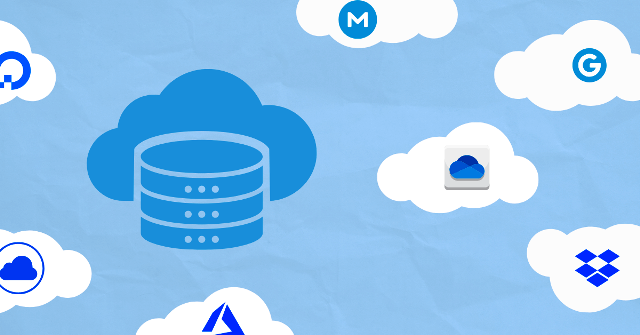In a world where offices are evolving, remote work has become the new norm and has transformed the traditional office landscape. It has made cloud workspaces essential for modern professional life. It can be said that such work landscape isn’t just the future; they’re the present reality.
Cloud workspace provides your team with the real time access to data, task performing tools and office applications like documents, meetings, presentation, invoicing and administration. Thus such tools and apps are enabling the teams to carry out their work seamlessly, no matter where they are located.
In this article, we’ll take a closer look at virtual workspaces, how they have evolved, and the benefits they provide.
What are cloud workspaces?
Before we delve further into the article, it is essential to know what cloud workspaces are. Such online work stations refer to virtual environments or platforms that enable individuals or teams to collaborate, communicate, and perform work-related tasks over the Internet.
These virtual work suites are hosted on cloud computing platforms, allowing users to collaborate, share files, and perform tasks without being tied to a specific physical location or device. Such platforms facilitate real-time collaboration among team members. So, the colleagues can work together on documents, projects, and tasks.
A cloud workspace is like a control center for organizations. It brings together all the projects, whether they’re on different accounts or various cloud services, into one easy-to-access platform.
The evolution of cloud workspaces
The evolution of cloud workspaces has been marked by continuous advancements and improvements to meet the ever-changing demands of the modern work landscape. Physical offices have undergone a remarkable transformation, reshaping the dynamics of collaboration for individuals and teams within virtual environments.
Evolving from basic file sharing in the early days to the advanced platforms available today, the evolution has been very quick. The ease and accessibility provided by cloud-based tools have significantly influenced the remote work environment’s development.
Today, they facilitate seamless collaboration, real-time communication, and scalable solutions, breaking down traditional office boundaries. The ongoing development of virtual and remote offices continues to redefine the way individuals and teams engage with work, promising a connected, accessible, and agile future.
Now, Google, Amazon and Microsoft are offering cloud based business suites that include spreadsheets, web and email hosting, document generation, presentation programs, meetings, remote desktops, virtual workstations, online storage, VPS and many more.
Benefits of cloud workspaces in modern work environments
The virtual work suites come with amazing features. They have streamlined many business operations like resolving customers’ queries, accounting, team management, HR and payroll etc.
Here, in the coming paragraphs I am discussing benefits of cloud based office suites.
Flexibility and mobility
One of the standout advantages of cloud workspaces is the liberation from physical constraints. It allows users to access their work tools, applications, and data from any location with an internet connection. This adaptability not only encourages a more balanced relationship between work and personal life but also enables organizations to access a diverse pool of global talent, promoting innovation.
Cost reduction
These real time workspaces have eliminated the need for extensive physical infrastructure, resulting in cost savings related to maintenance, upgrades, and on-site support. Rather than purchasing large amounts of local devices, it allows users to access information and programs through the cloud.
Automatic Updates and Maintenance
So on, online workspaces are alleviating organizations from the responsibility of manual software updates and maintenance tasks. The cloud providers automatically manage updates, ensuring that users have access to the latest features, security patches, and improvements without any disruptions to their workflow. This not only saves time but also guarantees that the workspace remains up-to-date and efficient.
Global accessibility and collaboration
Tools like Notion, Trello and Microsoft Teams have made it possible for users to collaborate with their teams on different projects regardless of their physical location. It allows team members from different regions and time zones to work together on projects. This global accessibility promotes diversity and helps bring different perspectives to the table.
Centralized data management
Realtime storages like Google Drive, Dropbox, OneDrive, IDrive ad Mega have simplifies data management by consolidating files. They have converged remote team members to centrally maintained record. Thus, it has reduced the risk of discrepancies and improving overall data consistency. And cloud storage providers ensure that all team members have access to the most up-to-date information.
Facilitation of Remote Work Culture
Virtual back offices are becoming the new normal worldwide, particularly because of the rising need for remote working arrangements. The rise of remote work is significantly facilitated by cloud workspaces.
Organizations are now able to introduce flexible work arrangements, enabling employees to work from home or other remote locations. This not only accommodates evolving work preferences but also plays a significant role in enhancing employee satisfaction and retention.
Enhanced Security Measures
Leading cloud service providers invest significantly in advanced security measures to ensure data integrity and confidentiality. From encryption protocols to multi-factor authentication, clouds are designed to safeguard sensitive information. Regular security updates and compliance with industry regulations contribute to a secure digital workspace, alleviating concerns about data breaches.
Integration of Advanced Technologies
Cloud workspaces serve as a platform for the integration of advanced technologies such as artificial intelligence (AI) and machine learning (ML). These advancements boost productivity through the automation of routine tasks, offering data-driven insights, and optimizing processes within the digital workspace. ChatGPT based extensions are now available for Office 365 and Google Office Suite.
Conclusion
Cloud workspaces represent a pattern shift in how we approach work in the 21st century. The comprehensive advantages highlighted above emphasize their importance in the modern workplace.
As organizations place a growing emphasis on flexibility, collaboration, and efficiency, cloud-based businesses take a prominent position at the forefront of this digital transformation.
The continuous evolution of technology, coupled with a dedication to overcoming challenges, establishes cloud workspaces not merely as a trend but as a fundamental catalyst for a future characterized by connectivity, accessibility, and agility.
Online file storage and office suites like OneDrive, Office 365, Dropbox and Google office suite are playing a pivotal role in shaping a connected and adaptable future. They all support real time file sharing, seamless working from remote locations in different time zones, team meetings, project management and overseeing business operations etc. This lit keeps on increasing.
Let see how they will revamp operations of an organization in coming days of 2024.
Frequently Asked Questions
What are cloud workspaces?
Cloud workspaces refer to virtual environments hosted on cloud servers. It provides the team with access to necessary content, tools, and applications, enabling them to carry out their work seamlessly.
How do cloud workspaces contribute to cost reductions for businesses?
Cloud workspaces eliminate the need for extensive physical infrastructure, resulting in cost savings related to maintenance, upgrades, and on-site support.
What role do cloud workspaces play in promoting a remote work culture?
Cloud workspaces facilitate a remote work culture. Due to these workspaces, organizations can provide flexible work arrangements. It also allows employees to work from home or other remote locations.
What is the future for virtual office suites?
The future of virtual office suites involves ongoing advancements in technology and greater integration of advanced features.



